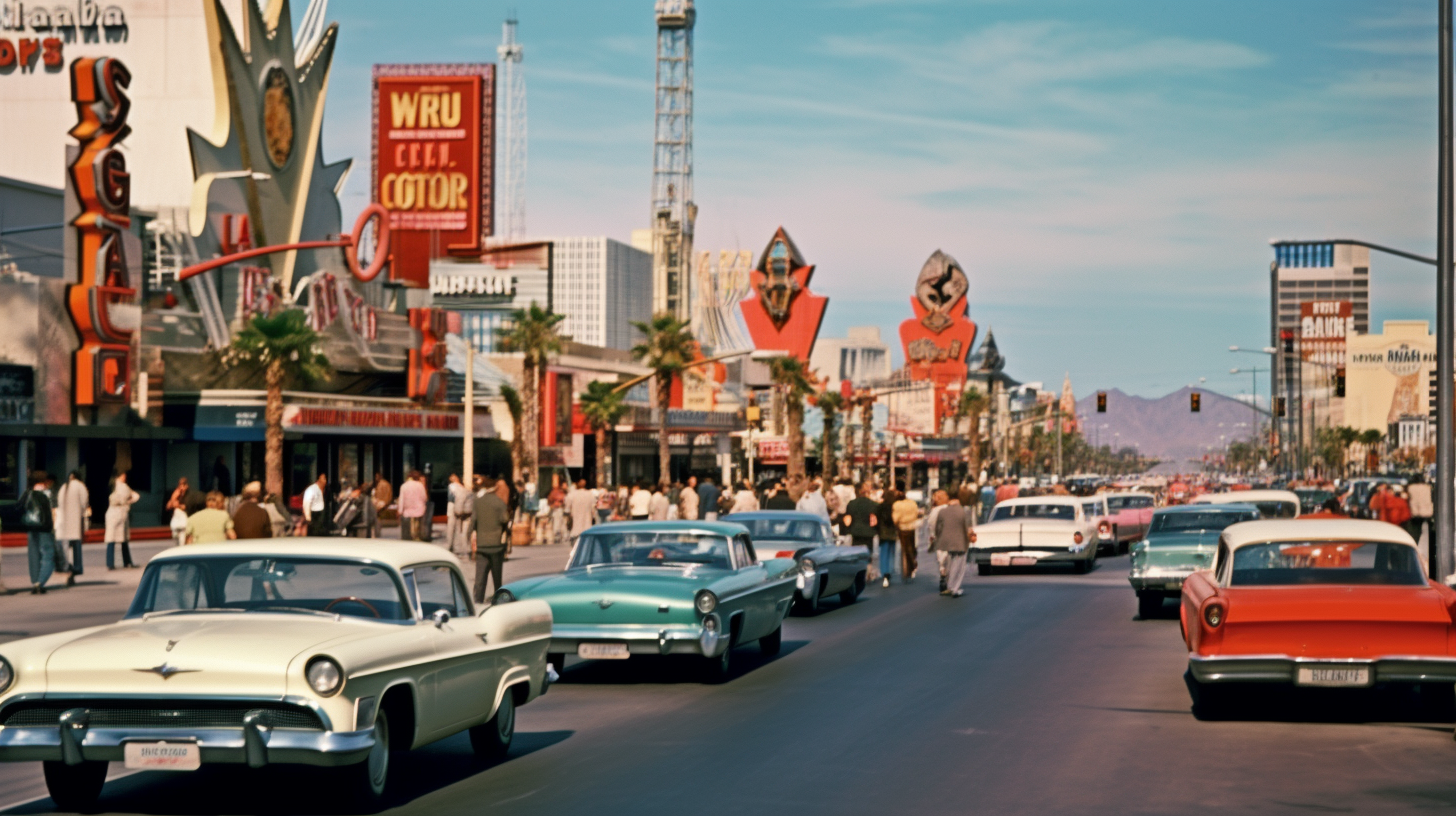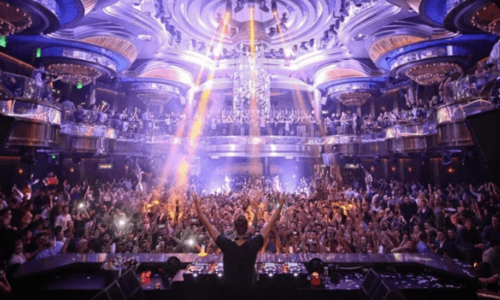The Las Vegas Strip isn’t just a stretch of road; it’s a legend, a spectacle, a playground of the high rollers and dreamers. Emerging from the barren Nevada desert, the Strip has shaped and mirrored the American dream, ever vibrant, ever enticing. Its story is a cocktail of ambition, extravagance, and, of course, luck. As we stroll down memory lane, we uncover the chapters that encapsulate the essence of this iconic boulevard, where every neon light has a tale to tell.
Table of Contents
The Early Beginnings
The roots of the Las Vegas Strip trace back to the early 20th century when it was merely a dusty trail. The real gamble began in 1941 with the opening of the El Rancho Vegas, the Strip’s first resort. Amidst a sparse desert landscape, Thomas Hull took a daring plunge by establishing this oasis of entertainment. His gamble sparked a flame that would soon ignite a torrent of development. The El Rancho Vegas paved the way for a future where neon lights would pierce the desert sky, and fortunes would be made and lost at the roll of a dice.
When Coolness Crowned the Strip
As the 1950s rolled in, the Strip became synonymous with the cool swagger of the Rat Pack. Frank Sinatra, Dean Martin, Sammy Davis Jr., and their entourage made the Strip their playground, infusing it with an air of effortless cool and glamor. The Sands Hotel and Casino became the unofficial headquarters of this legendary crew. Their presence on the Strip didn’t just draw crowds; it engraved an image of suave sophistication that became integral to the identity of Las Vegas. Their tunes echoed through the halls of the casinos, merging with the jingle of slot machines, crafting a melody that still resonates with every visitor.
A Dark Yet Dazzling Chapter
It’s no secret that the mob had its fingers deep in the pie of Las Vegas during the mid-20th century. The allure of easy money drew notorious figures like Bugsy Siegel, who spearheaded the development of the Flamingo Hotel, envisioning a haven of luxury and gambling. Though marred by violence and shady dealings, the mob era contributed to the rapid expansion and the flamboyant persona of the Strip. It was a time when the line between the law and outlaws blurred, yet the show went on, with the Strip shimmering brighter with every passing dusk.
The Corporate Takeover
As the shadows of the mob era receded, a new dawn of corporate ownership emerged on the Strip. The 1980s and 90s saw the entrance of tycoons and business magnates like Steve Wynn and Sheldon Adelson, who brought a veneer of legitimacy and a burst of innovation to the Strip. The Mirage, opened by Wynn in 1989, symbolized this shift, offering a blend of top-tier entertainment, luxury accommodations, and gaming excitement. The corporatization of the Strip led to a surge in mega-resorts, each vying to outdo the other in opulence and attractions.
Architectural Marvels and Themed Resorts
The Strip soon turned into a canvas for architectural marvels and themed resorts. The 90s witnessed the rise of iconic establishments like the Luxor with its pyramid shape and the Bellagio with its elegant fountains. Themed resorts transported visitors to different worlds, from the medieval ambiance of Excalibur to the New York skyline at New York-New York. This era of thematic creativity not only enhanced the Strip’s appeal but showcased the boundless imagination that fuelled Las Vegas’ continuous evolution.
Beyond the Casino Floors
While gaming remained a colossal draw, the Strip diversified its allure by hosting a medley of entertainment options. The arrival of Cirque du Soleil in the 90s and residencies by megastars like Celine Dion and Britney Spears cemented the Strip’s reputation as the Entertainment Capital of the World. From dazzling shows to world-class dining and shopping, the Strip became a multifaceted jewel, offering something for everyone.
Resilience Amidst Recession and Pandemic
The journey of the Strip hasn’t been without its share of storms. The Great Recession of 2008 hit hard, but Las Vegas bounced back, showing remarkable resilience. The COVID-19 pandemic posed a new challenge, temporarily dimming the neon lights. Yet, the Strip is on a path of recovery, adapting to new norms and preparing to dazzle anew.
Conclusion
The Las Vegas Strip is more than a stretch of neon-lit road; it’s a living testament to human ambition, imagination, and resilience. Each chapter of its history reflects the changing facets of American society, from the wild, mob-run days to the corporate era and the continuous strive towards innovation and entertainment. The Strip is a microcosm of dreams woven with steel, glass, and neon, standing tall as an emblem of endless possibilities. Through every high roller’s cheer and every tourist’s awe-struck gaze, the legacy of the Strip lives on, ever vibrant, ever inviting.
Media credit: The conceptual image of the Las Vegas Strip history in this article is copyright of VegasNews.com





